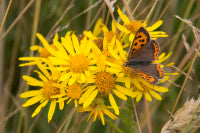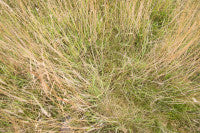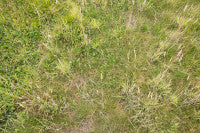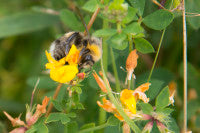Bowood Golf Club - don't be so dense!

The shape and play of most holes around the undulating parkland course at Bowood Hotel, Spa and Golf Resort, near Calne in Wiltshire, are defined by swathes of long grass rough. It was specifically designed to extend and extenuate the original Capabillity Brown-style grounds of Bowood House, and a visionary move when the course was constructed, twenty years ago, saw the rough areas sown with a wildflower and fine grass mixture.

To resolve the situation, Bowood Head Greenkeeper, Jaey Goodchild, instigated a trials management programme for the rough, involving options for intensive cultural techniques and targeted treatments with the selective herbicide, Rescue, to remove and manage the invasive coarse grasses, allowing the desirable fine fescue species to flourish. At the same time, with the dense cover removed, the wildflowers have been given the chance to proliferate to provide a riot of colour and renewed insect activity.

Successful trials
Jaey's most successful trials have been achieved from an autumn application of Rescue, followed by a deep scarification using an Amazone Groundkeeper to remove the years of accumulated thatch and dense matt of sward. Areas that have been sprayed, but not scarified, had successfully thinned out the sward, but had not seen the same level of wildflower recovery.

"Although the initial deep scarification was time consuming and removed a lot of organic material, the resulting thin and fine grasses will be far easier to manage in the future - which will be faster, less costly and less intrusive on play."
"The trials areas suggest we may need to repeat the selective herbicide application in the early years to continue the removal of coarse grasses. Once it is in control, however, it may only be required intermittently in subsequent seasons, or where there is a specific problem area to be targeted," he advised.
Environmental impact
The aim is to initially use the new techniques alongside the fairways and play-lines that will introduce new challenges for golfers, and then continue to enhance the environmental and aesthetic value across wider areas in future years. "There are eight or nine holes where we see the techniques could have a real impact on improving playability, but will look to do alongside all the fairways for consistency," he said.

Initially, Jaey, along with Deputy Head Greenkeeper and ecology specialist, Sam Day, will monitor what wildflower species regenerate successfully from the original sowings, along with the insect species that are seen around the course over the coming seasons. Additional wildflower seeds can be sown in subsequent years, after the scarification, as part of the annual management process.
"With these techniques, we have the opportunity to produce a better course for players, manage costs more effectively and create a more attractive environmental asset."
Golf pro's view

He highlighted that today's golfers are demanding faster rounds and are increasingly frustrated by delays caused by slow play. "Most players are intimidated by the dense rough and the fear of straying off the fairway; even low handicap golfers are forced to play more conservatively."
"It is an exciting proposition if we can ultimately create a challenging course design with more open, thin rough where golfers will not be unduly penalised by thick, dense rough. The work being undertaken by Jaey and the greenkeeping team is integral in providing great golf surfaces, and a wonderful environment in which to play."

Golf courses provide an essential haven for some of the UK's most endangered insect species and, potentially, hold the key to restoring populations of essential pollinating insects. A new study, to provide a scientific approach to pollinator conservation efforts on golf courses, has revealed some fascinating finds.
The extensive study, by leading independent entomologist and ecologist, Mike Edwards, on some of the golf courses involved in the Operation Pollinator initiative across the UK, has catalogued the diversity of insect species present, and the habitat potential to increase both the numbers and range of insect species.
Commenting on the study's results, Mr Edwards highlighted that, whilst some individual golf clubs already have areas of outstanding interest for wildlife, there remains a large number where the potential to make a real contribution had yet to be realised.
"Many of the older clubs have areas that reflect the sort of countryside that was present before modern agricultural production became established. All too often, however, these areas have, sadly, been unmanaged and of limited ecological value," he said. "Providing expertise and support in restoring such flower-rich grasslands can make a major contribution to the conservation of our flora and fauna."

"It is a classic case of when you put the habitat back, bumblebees and other pollinating insects are given the chance to recover," he advised.
The club's Head Greenkeeper, Jamie Goddard said: "The fact that we already have the incredible find of the rare Bombus ruderatus on the course highlights the ecological value of golf courses. Now, we can actively manage areas to make them even more attractive for bumblebees and other pollinators."
The club has instigated a three-year plan for the establishment of dedicated wildflower habitats and management of rough.
Mike Edwards continued: "Increasing the floral diversity has been shown, time and time again, to result in more insects and a greater diversity of species; golf courses will be no different. It can be the start of a very important journey."
